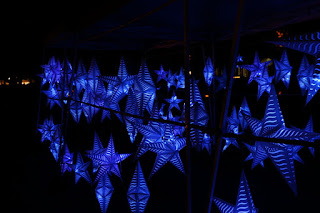

 Before taking us into the mill, Andrés showed us the Sylvanus Brown House, which depicts the lifestyle of a typical pre-industrial family in Rhode Island.
Before taking us into the mill, Andrés showed us the Sylvanus Brown House, which depicts the lifestyle of a typical pre-industrial family in Rhode Island.
Samuel Slater had come over from England as a young man, after apprenticing in textile machinery there. It was against the law to export the designs for the machines, so Slater memorized them and thus smuggled the technology into America, where he felt he had a better chance of making his fortune. Thus the “Father of the American Industrial Revolution” (a title coined by President Andrew Jackson), to whom America owes much of her wealth today, was an illegal immigrant! Take that, Donald Trump! In England he was known as “Slater the Traitor.”
With funding from the wealthy businessman Moses Brown (one of the co-founders of the college that would later be renamed Brown University after his nephew John Nicholas Brown), in 1793 Slater built his mill, powered by water from the adjacent Blackstone River. The dam he built across it was at the time the largest dam in America. He partnered with mechanical engineer David Wilkinson who had invented a lathe for cutting screw threads, an extremely important development in the machine tool industry. The Wilkinson Mill churned out screws for buyers all over the world, standardizing what had previously been individual products created by hand one at a time. When anyone could buy a screw that was interchangeable with any other one of the same size, it made possible mass production of all kinds of products.


Slater also started the first Sunday School in America. He provided education on Sunday afternoons to the children (ages 7-12) who worked in his mill, This was before the days of child labor laws, and even before industrial safety laws. Slater didn't tolerate laziness on the job, so if you had a workplace injury or other illness, you still had better come to work (using crutches if necessary). Slater's reputation around the country was such that if you had worked for him, you could get a job anywhere else, unless you had been dismissed from his service, which would be a black mark against you for hundreds of miles.
There were all kinds of fascinating machines that our guides demonstrated to us – many still in working condition. One of them was a mechanized loom that was controlled by cards with pegs in them – an early precursor of computer programming, similar to the Jacquard loom.


We had lunch (including more New England clam chowder) at Hemenway’s, a classy seafood restaurant near the Brown campus that has been there since I was a student, and then checked in to the Old Court B&B, our home for the next three days.
This evening we went for a walk down the hill to enjoy WaterFire, a special event that the city puts on several Saturday nights in the summer along the Providence River. In the center of the river they place burning cauldrons that are lit by men in gondolas poling their way up and down the river, and stoked with wood by boats. There is music piped in to speakers along the river, and people meander up and down the river, listening, watching fire-juggling acts, taking in the smell of the burning wood, and poking around at the tents with food and various artisans’ crafts.


We also came upon a very lovely and moving Holocaust memorial. It was a short pathway lined by candle-lit lanterns, with an image of railroad tracks in colored bricks. At the beginning of the path was a receptacle of clear glass pebbles which you could pick up one or several of (e.g., for the memory of any ancestors who had died in the camps), and carry it along the path to place on top of a smooth stone at the end. I placed three for the memory of Olga Perera Pincherle (my grandfather’s cousin) and two of her children, Emilietta and Samy.






No comments:
Post a Comment